Trip to the Brazilian Amazon: a tour for responsible tourists
Skip the mass tourism packages and the luxury jungle hotels and cruises and get to know the local culture doing a trip to the Brazilian Amazon through a community based tourism project. Even for a Brazilian like me, the Amazon can feel like a different world. I fell in love with it after spending a few days at an indigenous community in the rainforest and totally recommend you to do the same!
You may also like to read:
What to do in Salvador de Bahia
5 reasons to visit Recife, Brazil

My trip to the Brazilian Amazon
Most tour agencies in the Brazilian Amazon offer attractions that involve animal interaction, which may sound exciting but is actually not advised (and it’s a serious problem in the region, as noted by organizations such as World Animal Protection).
I wanted to avoid taking part in that as much as I wanted to engage in a tour that wasn’t crowded with tourists and that would allow me to get in touch with the local people.
Fortunately, as I planned my trip to the Amazon I came across Braziliando. This small tourism business promotes community-based tourism experiences near Manaus, the capital of the state of Amazonas. Which is, in case you didn’t know, one of the states where the Brazilian Amazon is.
The itineraries for their “tour packages” are developed jointly with the residents of local communities, addressing their needs and taking environmental preservation seriously.
While other tour packages might include a stop of a few hours in a riverside community, Braziliando takes you through a real community experience.
The company works with different riverside communities. The one I stayed in was that of Nova Esperança (New Hope), in the region of Baixo Rio Negro (the low bank of the Rio Negro). It’s located in the Puranga Conquista Sustainable Development Reserve, in the Cuieiras River.
Together with a friend from India, I spent three whole days there. Although my friend didn’t speak Portuguese, with a little help from me he really enjoyed the experience. If you don’t speak Portuguese and aren’t traveling with someone who does, you can ask Braziliando to hire a translator, if you wish.

In this article, I’m going to talk about:
The journey from Manaus to the community
The indigenous community of Nova Esperança
Our hosts and our lodging
The activities we did each day
The route back to Manaus
What to pack for this trip
How to do this tour of the Brazilian Amazon
The journey from Manaus to the community
To get from Manaus to Nova Esperança you have to take a boat on the Rio Negro, which then turns onto the Cuieiras River. We took a “barco de recreio”, which is a kind of boat normally used by the locals, and it took us about 7 hours to get there. This regular boat ride is quite cheap: 35 BRL per person each way. It has scheduled departures from the port in front of the Manaus Moderna market, in the city center.
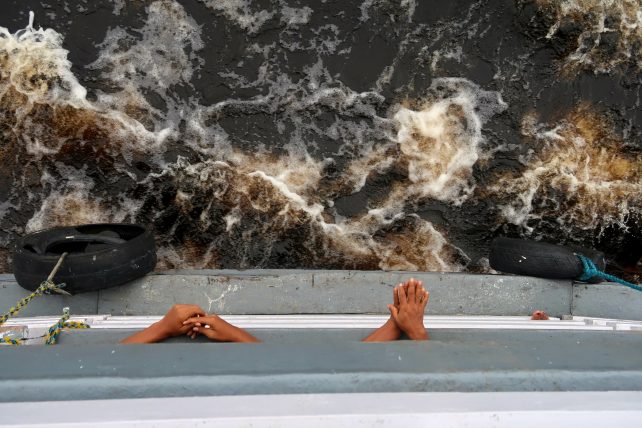
It’s also possible to charter a private boat to travel from Manaus to Nova Esperança in two or three hours, which will cost around 600 BRL per way for one passenger or about 1.000 BRL for a group of 2 to 5 people.
I must admit that I was a bit worried at the thought of the seven-hour boat trip because I had heard that these vessels were sometimes overcrowded and that accidents in the area were not unheard of. I also figured it could be uncomfortable, tiring or tedious.
But as it turned out, I had no reason for worries. The boat journey ended up being one of my favorite parts of the trip.

On the morning of our departure from Manaus, an hour before the boat was scheduled to leave, our host Walmir met us at the Adolpho Lisboa Municipal Market, which is next to the Manaus Moderna market. We bought some snacks for the trip (fruits and nuts) and went with him to the boat, which was about a 10 minute walk.
Walmir had already set up two hammocks for us on the first floor of the boat. We put our backpacks on the floor beneath the hammocks and texted our families we were leaving and would soon be without internet or cellphone reception.
The boat wasn’t crowded at all and the weather was calm. The breeze was a delight and I didn’t feel like doing anything but lying in my hammock, enjoying the ride.
Time flew by as we chatted, took short naps and watched the families lying together in their colorful hammocks and the riverside houses over the broad banks of the river.
From time to time, small boats approached ours, while we slowed down so that passengers could get in or out. I tend to get motion sickness easily, but luckily the boat hardly rocked.

The first floor, where we stayed, seemed more pleasant than the one below it, where there was some noise and smells from the boat’s mini-kitchen. There were also toilets downstairs (without toilet paper, though). This is not uncommon in Brazil so it might be good to take some if you’re going to less “fancy” areas.
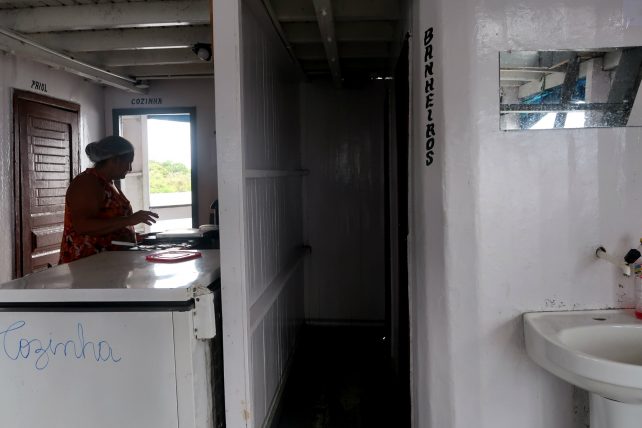
On our boat there were some simple meals, hamburger, beer, soda and snacks for sale. But I was told that food is not always available, so I’d recommend doing as we did and buying some food at the market before boarding.
We stopped by a few other communities on our way and reached our destiny with the last sunrays of the day. Such a pretty welcoming!
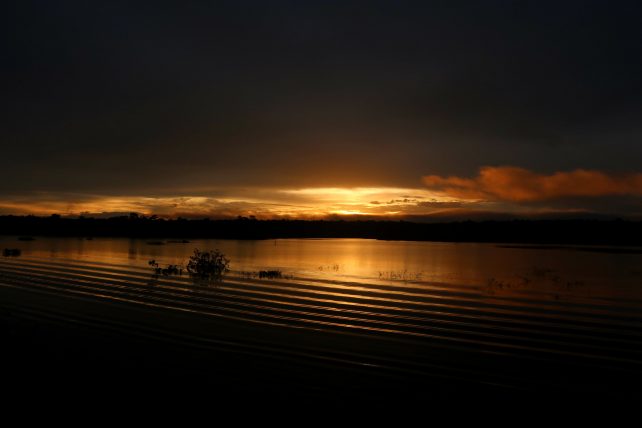
The indigenous community of Nova Esperança
Nova Esperança was founded by indigenous people of the Baré ethnic group. About 40 families live there today, most of which are related to each other. The majority of them make a living from farming or from the sale of handicrafts.
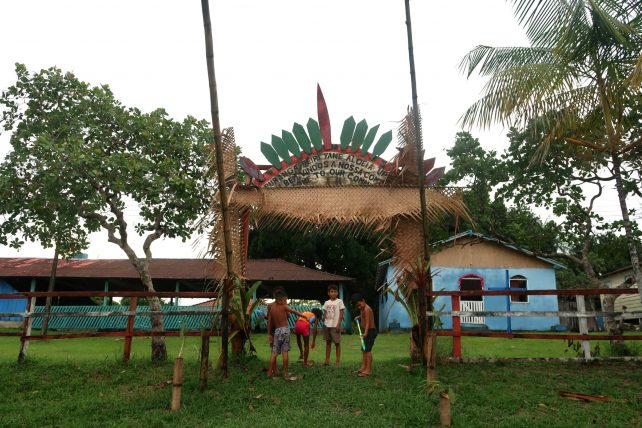
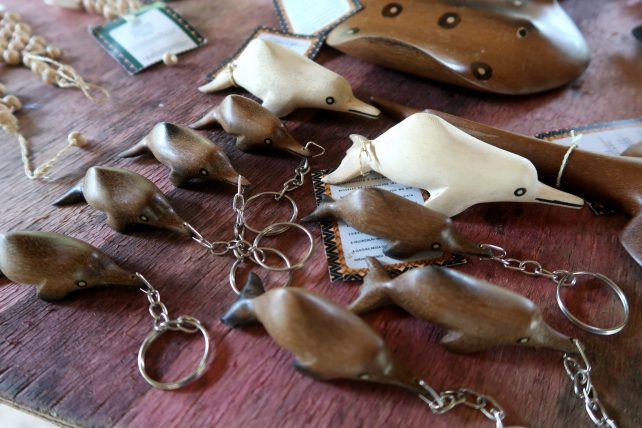
The tradition of craftsmanship, as you might imagine, is passed down from parents to children. Juliana, our host, learned from her mother to make bracelets, necklaces, earrings and other objects from seeds, straw and feathers. Walmir, her husband, taught their son to work with wood.
The products are sold to tourists who stop there for a few hours or to dealers in Manaus and other parts of Brazil.
There’s no cell phone signal in the community and no power supply. The houses have generators, but they are only switched on for a few hours a day, since it’s expensive to buy fuel.
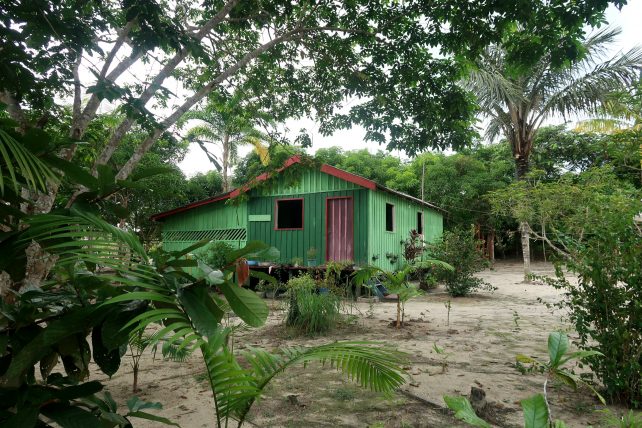
Many residents have wi-fi, but can only use it during those intervals when the power is on. While we were there we didn’t use the internet at all, but I did use Walmir’s phone to text my mum on Whatsapp and let her know all was well. ;)
Although they all speak Portuguese, they also try to keep alive the language of the Baré people, Nheengatu, which is taught in the local school. This language is like a modern version of the Tupi, which was spread by the Jesuits and became the most spoken language in the Amazon for some 200 years.

Our hosts and the lodging
Our hosts, Walmir and Juliana, have a guest bedroom and use the money from tourism as a supplement to their income, which comes mainly from handicrafts.
They have already hosted dozens of people from various parts of Brazil and the world and were very attentive to our needs. They made us feel comfortable and were very punctual with the activities in our itinerary.
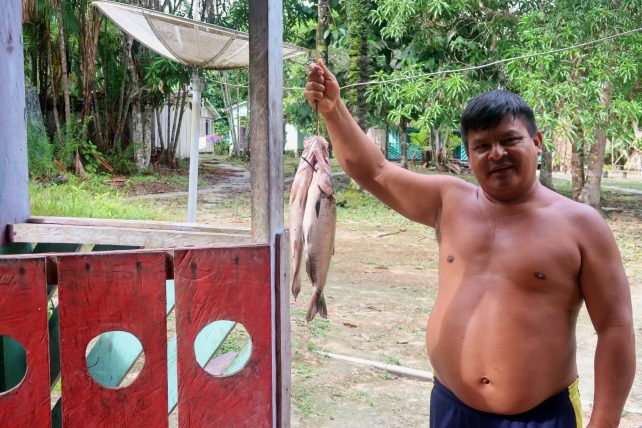

Their house is simple, like everything there, but very neat. The guest bedroom had a double bed, hammock, table and bathroom with cold shower, toilet and sink. There was an outlet in the room where we could recharge our cell phones and cameras when the electricity was on.

They have four children: Kalison is 17 years old, Samara is 14, Maria Clara is 3 years old and Maria Julia is now about 7 months old. They’re all great, but I fell in love with the very smart and independent Maria Clara. Such a cutie!
The meals were all included in our “package”. The food was homemade, tasty and well served, although not so varied. We ate some typical delicacies, such as cassava cake, tapioca dumplings, tapioca flakes mixed in coffee with milk, a local fruit called tucumã, fish caught from the nearby river and juices from the fruits in their yard.
The variety of fruits and vegetables is somewhat limited because the soil isn’t very good for planting and they don’t go to Manaus very often, nor can they store perishables for long. But we were always satisfied.
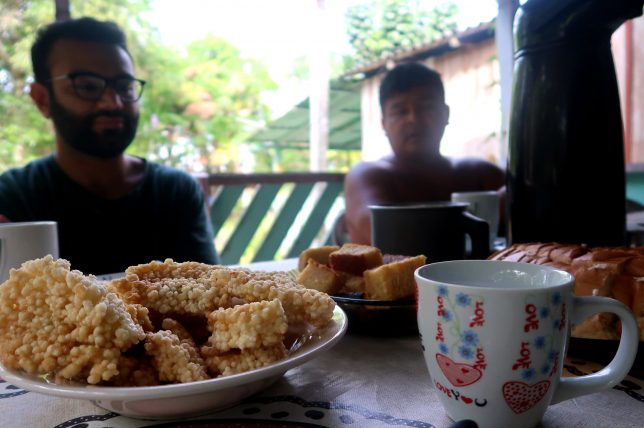
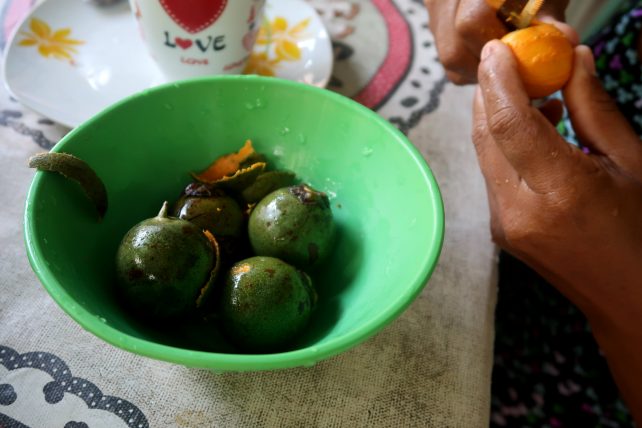
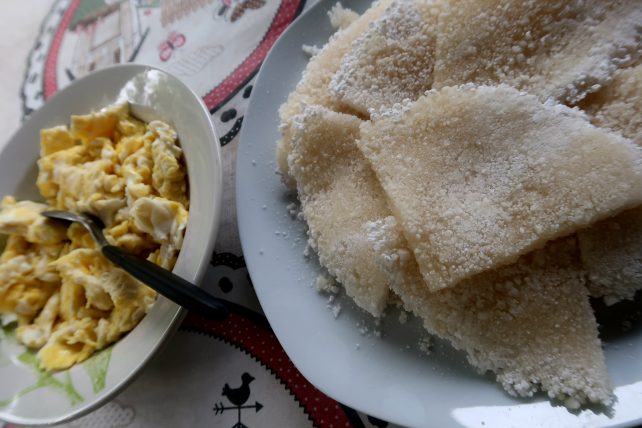
Day 1: forest hike and walking around the community
Before we left for the trip, Braziliando sent us an itinerary with the daily program. They warned us that the activities could change depending on weather conditions, but we were lucky and everything went as planned. :)
On the first day, we left at 9:30 and took a 10 minute boat ride to the beginning of the hike through the jungle. This boat journey, although very short, was my favorite part of the day.
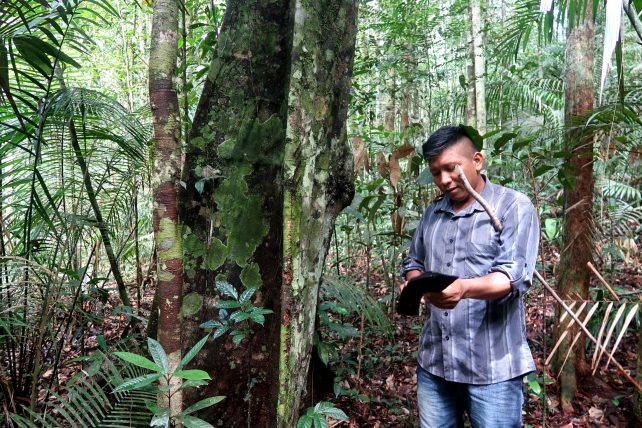
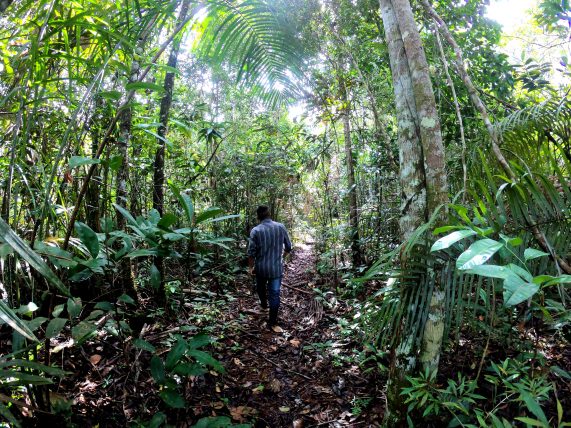
I didn’t find the hike especially interesting, but it was nice to walk through the woods and see several important elements for those who live in the forest. We saw many plants with medicinal uses, others that are used to cover houses or for making typical clothes and even one that serves as a natural bug and insect repellent.
I had feared we would be ‘eaten alive’ by mosquitoes and took special precaution such as wearing light colored clothes and using plenty of repellent. Fortunately, the mosquitos kept away during the hike. However, be prepared to be drenched in sweat: the rainforest is super damp! Humidity is around 65% most of the year round.
Since we left a bit late for the hike, we didn’t see any animals in the jungle. But if you leave around 7a.m., you are likely to see monkeys and other small animals.
We returned to Walmir and Juliana’s house at about 1 pm and after lunch Walmir took us for a walk around the community. He showed us the library, the church, the school and other common areas and was patient enough to answer the thousand questions I asked about Nova Esperança.
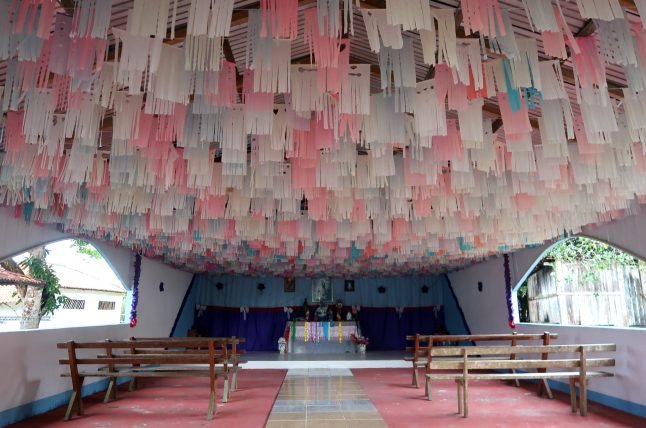

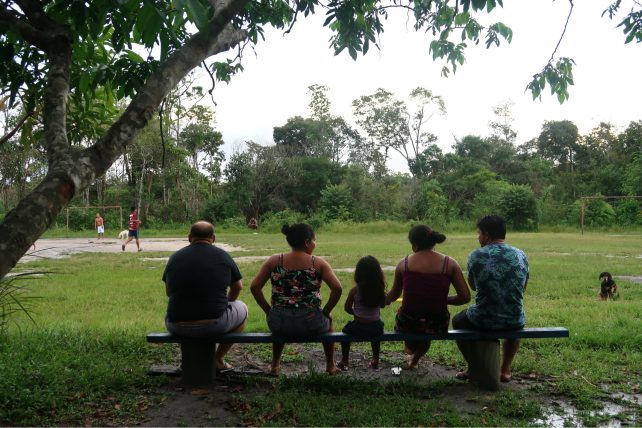
Day 2: flour making, river swim and canoeing through the flooded forest
The second day started with the ‘farinhada’, which is the traditional process of making cassava flour. Although the riverside communities of the Amazon have each their own peculiarities, most of them have one thing in common: cassava. And the process of making the flour is very interesting.
We met Walmir’s mother, Arlete, while she working on it with her husband. Already retired, they continue to work on the plantation and like to make their own flour instead of buying it ready. Most days they get up very early to get the cassava from their little plot, wash it, peel it, crush it, press it, bake it… It’s quite a lot of work!
Arlete is super nice and talking to her was another of my favorite parts of this experience in the Amazon. They don’t like life in the big city and they’re very proud of their culture.
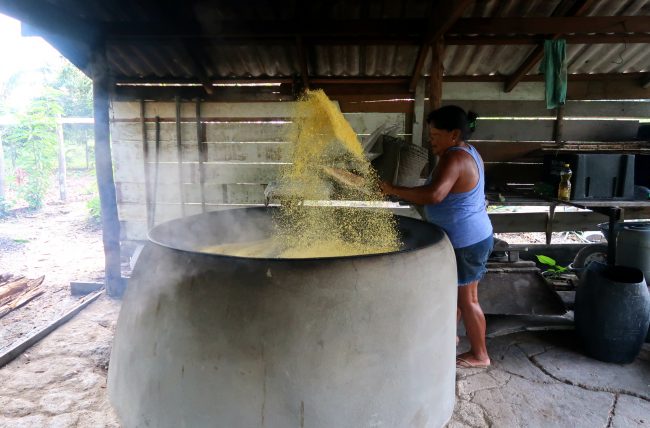
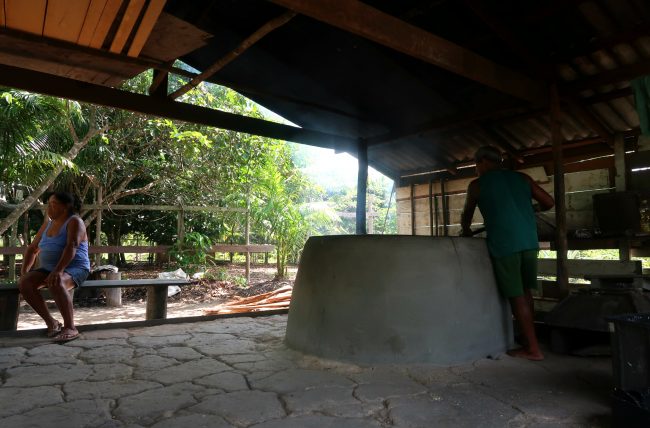
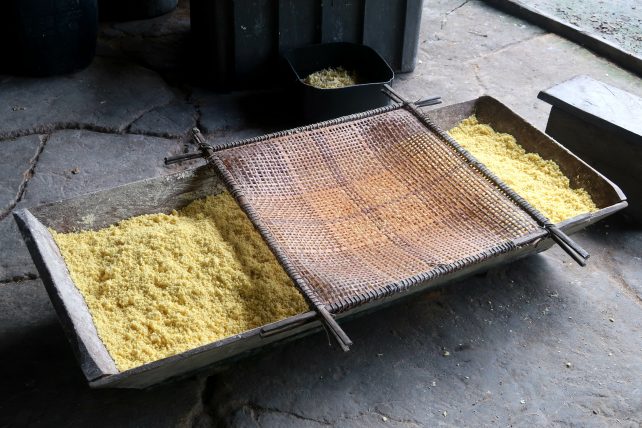
After the visit to the flour house we had lunch, rested in the hammock and went for a swim in the river with the local children. The water was very refreshing!
At 4 p.m., we went canoeing through the flooded forest. I’ve never been to the Amazon in the dry season, when there are river beaches that must be nice, but I LOVED how the forest gets in the rainy season. The river turns into a mirror, and seeing the immense tree trunks covered in water was just surreal.
We rowed around the “waterways” between the plants very slowly, admiring the various shades of green of the forest. The silence was only interrupted by the sound of the oars entering the water and some birds singing. Quite awesome!

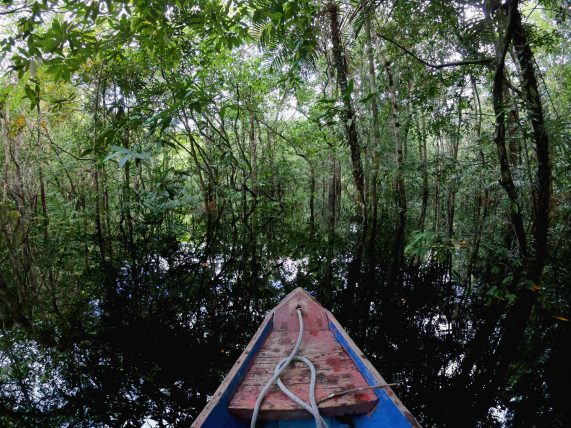
On our way back, we went to see the gorgeous sunset by the river. As always, the children were playing in the water with a kind of joy that only those who haven’t grown up inside four walls can experience.
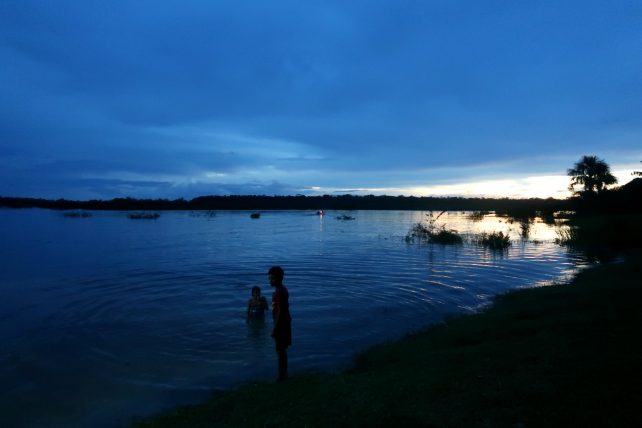
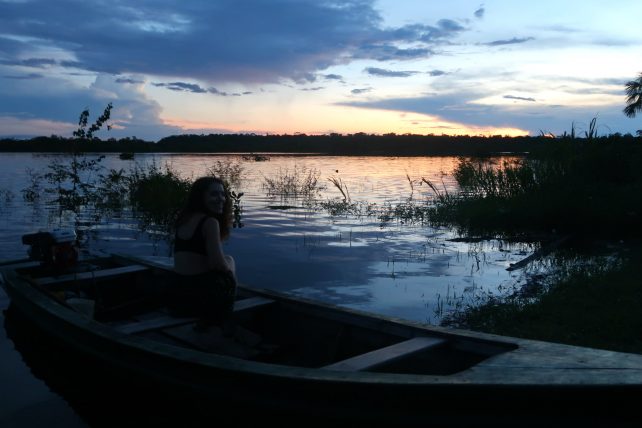
Day 3: free morning, handicraft workshop and return to Manaus
The third day of our trip to the Brazilian Amazon was quite laidback. We had the morning free, and while my friend went around taking pictures I stayed in and did some work. After lunch, I went for a farewell swim in the river and went to see the handicraft made by the people of Nova Esperança.
They make lots of beautiful things with seeds and wood. And I found it cool that in each product there’s a label with some information about Nova Esperança and the name of the artisan responsible for the piece.
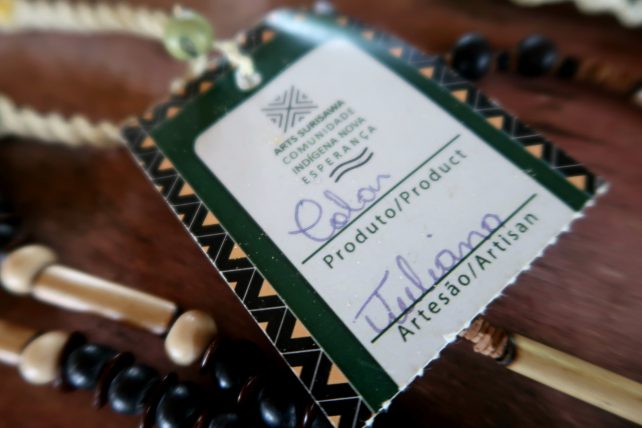

We then sat down with Juliana for the craft workshop. She showed us some of the necklaces and bracelets she makes and asked what we wanted to learn. I obviously chose the easiest model of bracelet, since my manual skills are nearly non-existent.
It took me a while to learn the right moves to weave the straw into the seeds (which were harvested right behind the house), but after I got the hang of it I ended up being the first one to finish! Thanks to Juliana’s patience, I brought home two souvenirs I made myself. ;)
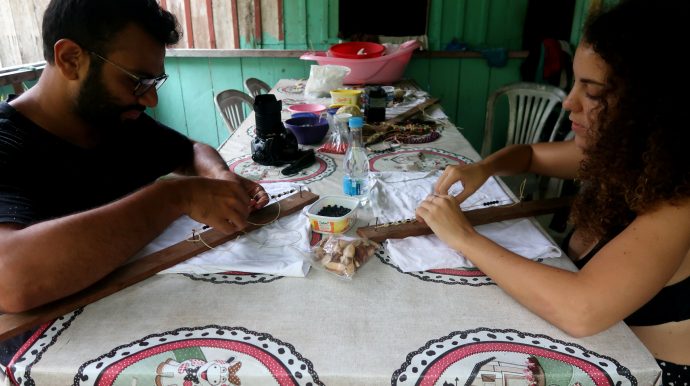
The route back to Manaus
The return to Manaus was even more special than the journey out. We crossed the night for almost 12 hours admiring the stars and the darkness. This stretch was more time consuming because we spent a few hours “parked” in front of a community near Manaus, but it was so pleasant that I didn’t care.
When we weren’t sleeping in our hammocks we just enjoyed the quietness of the boat, had some beer and took photos of the sunset and some pretty lightning in clouds further away.

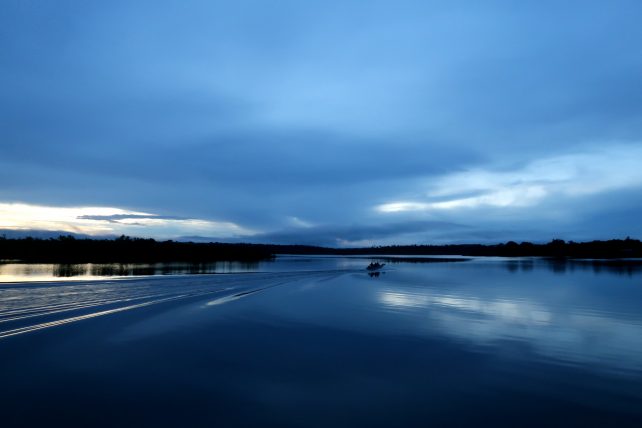
We arrived back at the city at dawn, which painted the sky pink and orange. As I lazily left my hammock at 5am, I saw the little boats unloading loads of cabbage and giant bananas.
The boat would still be there for a few hours and many people stayed there, as they were waiting to go to a doctor’s appointment or run errands in the city later on. I went back to the hammock and let it hug me a little bit longer: I still wasn’t ready for this experience to end.
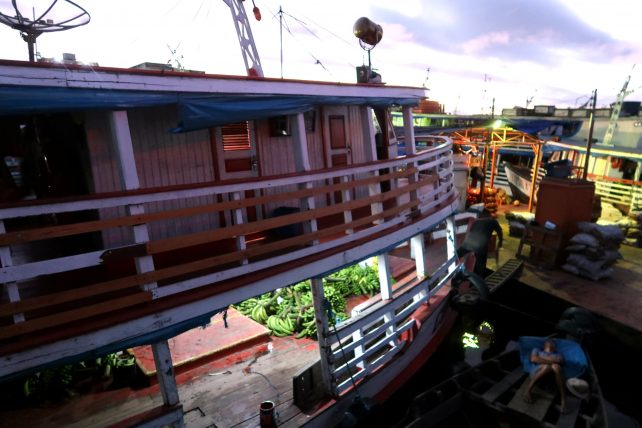

What to pack for this trip to the Brazilian Amazon
Hygiene items
Comfortable shirts (dry-fit if possible)
Long trousers for the hike
Comfortable shoes or hiking boots
Socks to wear over trousers for the hike
Swimsuit
Flip flops
Raincoat
Sunglasses
Sunscreen
Insect repellent
Flashlight
Plastic bag for dirty laundry
Smaller backpack for daily activities
Any medicine you usually take
Camera and chargers
Waterproof bag for equipment
Money to buy handicrafts
Blanket or sleeping bag for the boat and for the nights
Pajamas
Small pillow for the hammock
I recommend carrying a backpack instead of a suitcase to facilitate the entry and exit on the boat and the walk around the port and the community. It’s also advisable not to carry too much weight.
If you have taken a lot of luggage to Manaus, I suggest asking your hosts to store what you will not use during the days in the jungle. The Local Hostel, where I stayed, is used to storing people’s backpacks for a few days.
Looking for a place to stay in Manaus? Check out the available options
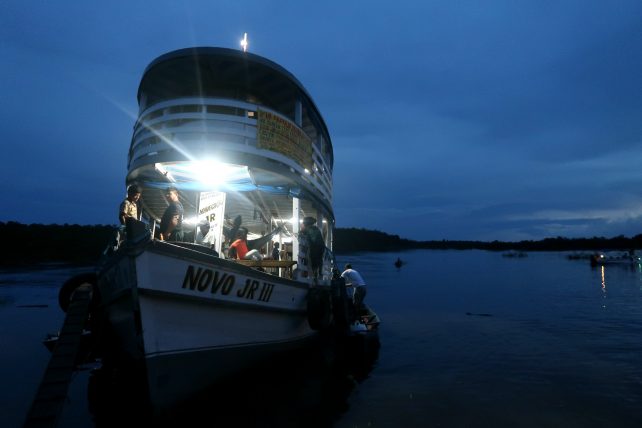
How to do this trip to the Brazilian Amazon
Do you want to know more about the experiences offered by Braziliando at the Brazilian Amazon? Contact them through their website or e-mail them at [email protected]. Until September 30th 2019 you get 10% off using the coupon janelasabertas.
The work that Braziliando does to help develop the community-based tourism in the Amazon, with positive social and environmental impact is of the best quality, and they were very thoughtful and caring throughout all the stages, from planning to delivery of the trip itself.
Did you have any other experiences doing a trip to the Brazilian Amazon, or do you have questions about this tour? Use the comments section and let me know!
Full disclosure: the blogger received a discount for the trip with Braziliando in exchange for talking about it in the blog. The opinions expressed here are my own and didn’t suffer any interference from the company. The author values transparency and always mentions sponsorships or partnerships.

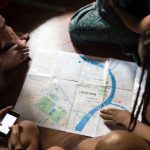

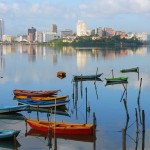
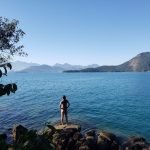





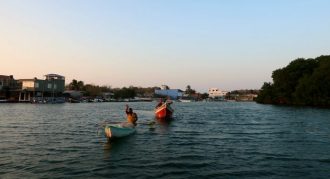





0 Comentários